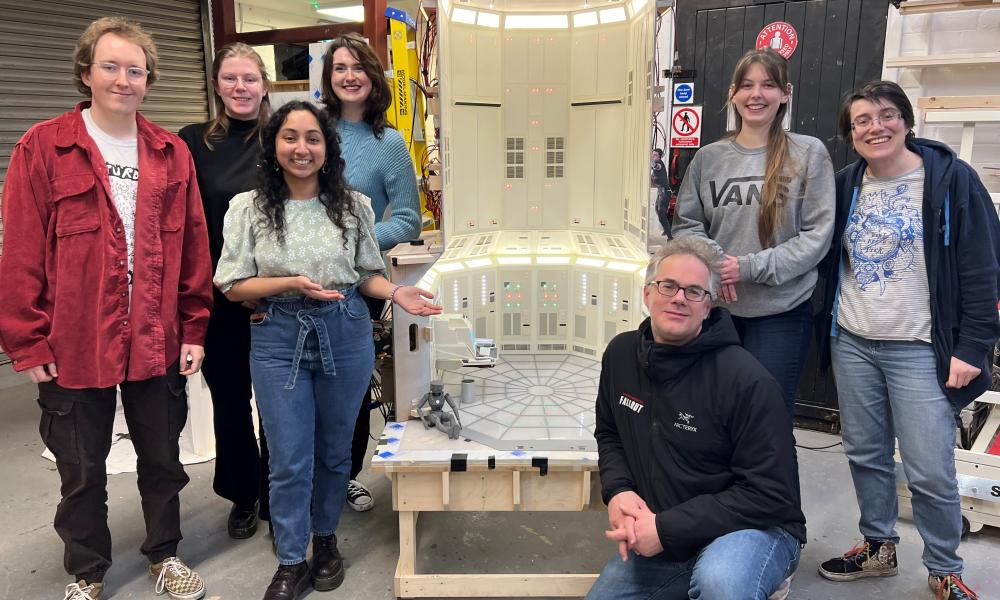NFTS Students Pay Homage To Mission: Impossible With Miniature Replica Masterpiece!
The National Film and Television School (NFTS) is once again pushing the boundaries of creativity with yet another breathtaking miniature replica of an iconic film set. Every year, the talented students from the NFTS Model Making Diploma take on the challenge of scaling down a set from a culturally significant film, tackling legendary titles including The Shining, 2001: A Space Odyssey, and Wes Anderson’s Fantastic Mr. Fox. This time, they have set their sights on the impossible - recreating the legendary CIA vault from the original Mission: Impossible starring Tom Cruise.
With Mission: Impossible - Dead Reckoning Part One currently captivating audiences in cinemas around the globe, there's an extra level of excitement surrounding this incredible project. Collaborating with the School's Visual Effects MA students, these aspiring creators have poured their passion and expertise into bringing the impenetrable CIA vault to life.
Christopher McQuarrie and Eddie Hamilton, director and editor of Mission: Impossible respectively, have both seen the build and were blown away by the results, much to the delight of NFTS students.
Eddie visited the Model Making workshop in Beaconsfield in March 2023 and met the students in person as they were putting the finishing touches to the model. On seeing the finished product a few weeks later, Eddie commented: “It’s absolutely perfect. What a terrific job by the entire team. A real sense of achievement and pride in combining all those skills and creating that beautifully detailed model and then augmenting it with a charmingly animated CG character.”
Step into the world of espionage and get ready for a behind-the-scenes glimpse into the craftsmanship and attention to detail that went into crafting this stunning replica. The CIA vault, forever etched in cinematic history from its memorable appearance in the first-ever Mission: Impossible film released back in 1996, is now meticulously recreated by these talented students.
Read on to immerse yourself in the magic of filmmaking and explore the intricacies of this miniature masterpiece. It's time to grab your popcorn and discover the dedication and artistry of NFTS students as they pay homage to one of the most iconic film franchises of all time!
Explore behind the work
Watch the final film!
Let the students take you behind the scenes on this year's miniature replica set build module...
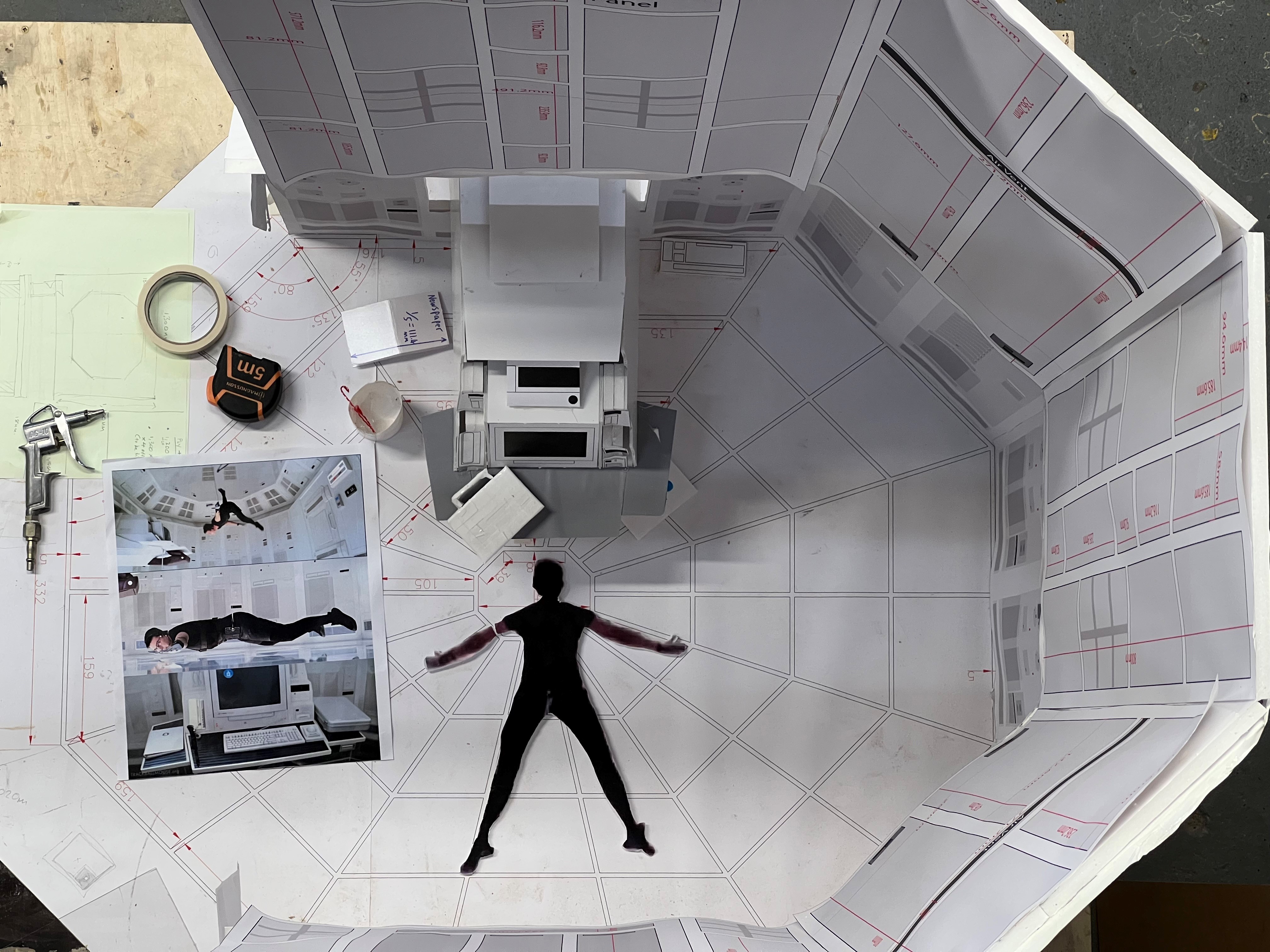
Creating a detailed white card maquette is the first place students start as they begin to work out the scale and design of recreating the iconic vault set featured in the first Mission Impossible film released in 1996, originally designed by Production Designer Norman Reynolds. Close examination of the film sequence helped the students work out the actual size of the room, based on the stride of CIA operative Ethan Hunt, played by Tom Cruise.

Model Making Students start their build, codenamed 'Mission: Possible' in the workshop at the National Film and Television School in Beaconsfield, Bucks, UK. Working to a scale of 1:5, they work meticulously on the construction of the octagon base wall, learning industry standard carpentry skills as the build progresses. Construction on the upper wall of the model also begins which will later contain around 350 LED lights, all programmable for the individual Motion Control camera passes.
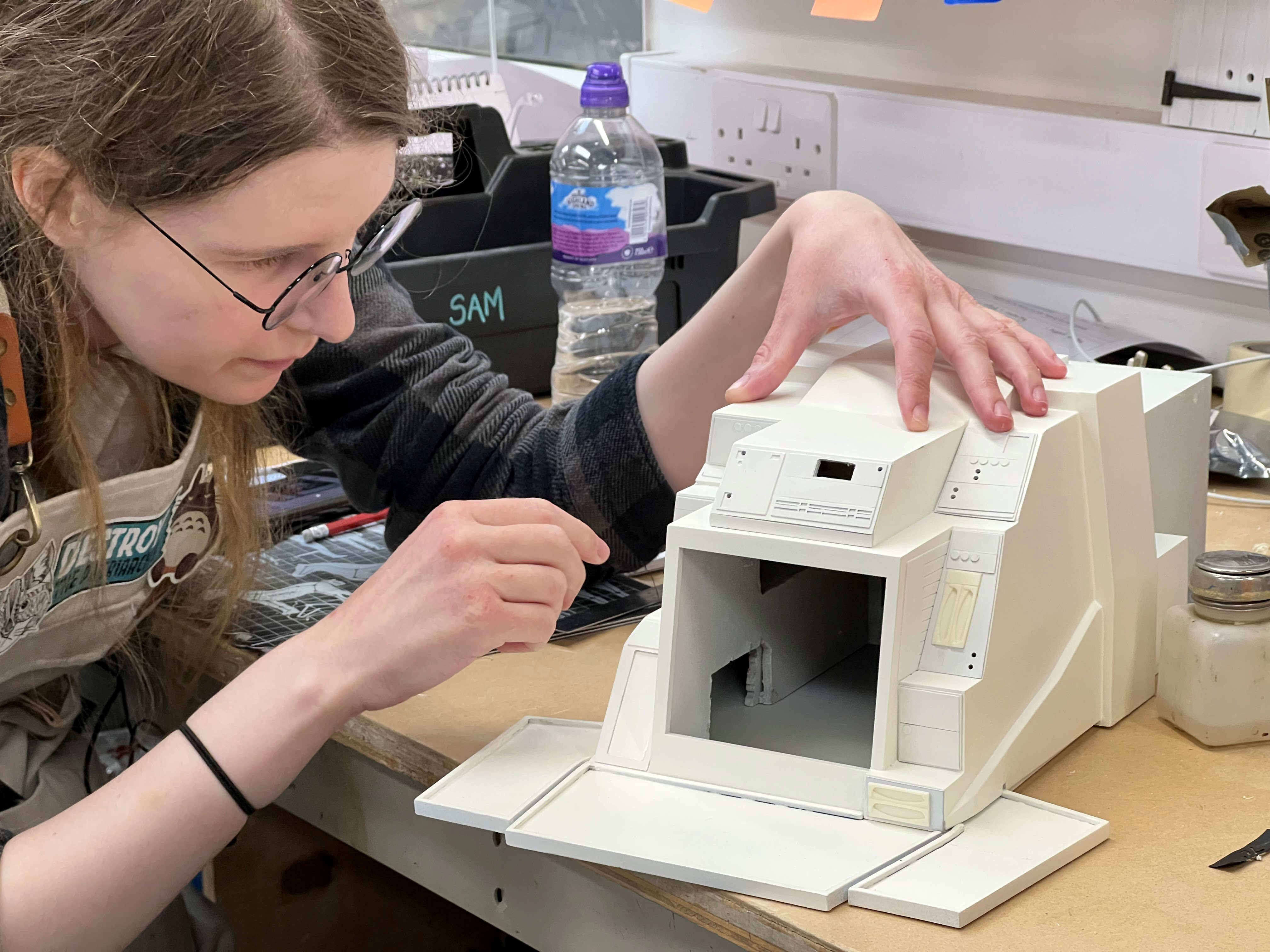
In the original Mission Impossible film, the NOC list Ethan Hunt is sent to copy is held on a computer at CIA HQ in Langley. Here, a Model Making student adds the finishing touches to a miniature replica of the computer, designed in Rhino and then developed using MDF, plasticard, chemi wood and acrylic. The prop was a collaborative effort made by four students, with a great deal of time spent making sure everything fits together correctly, allowing for it to be opened up to add the practical LED lights for the buttons and screen. The computer was also designed to be removed from the wall section to allow for camera access when shooting across the set.
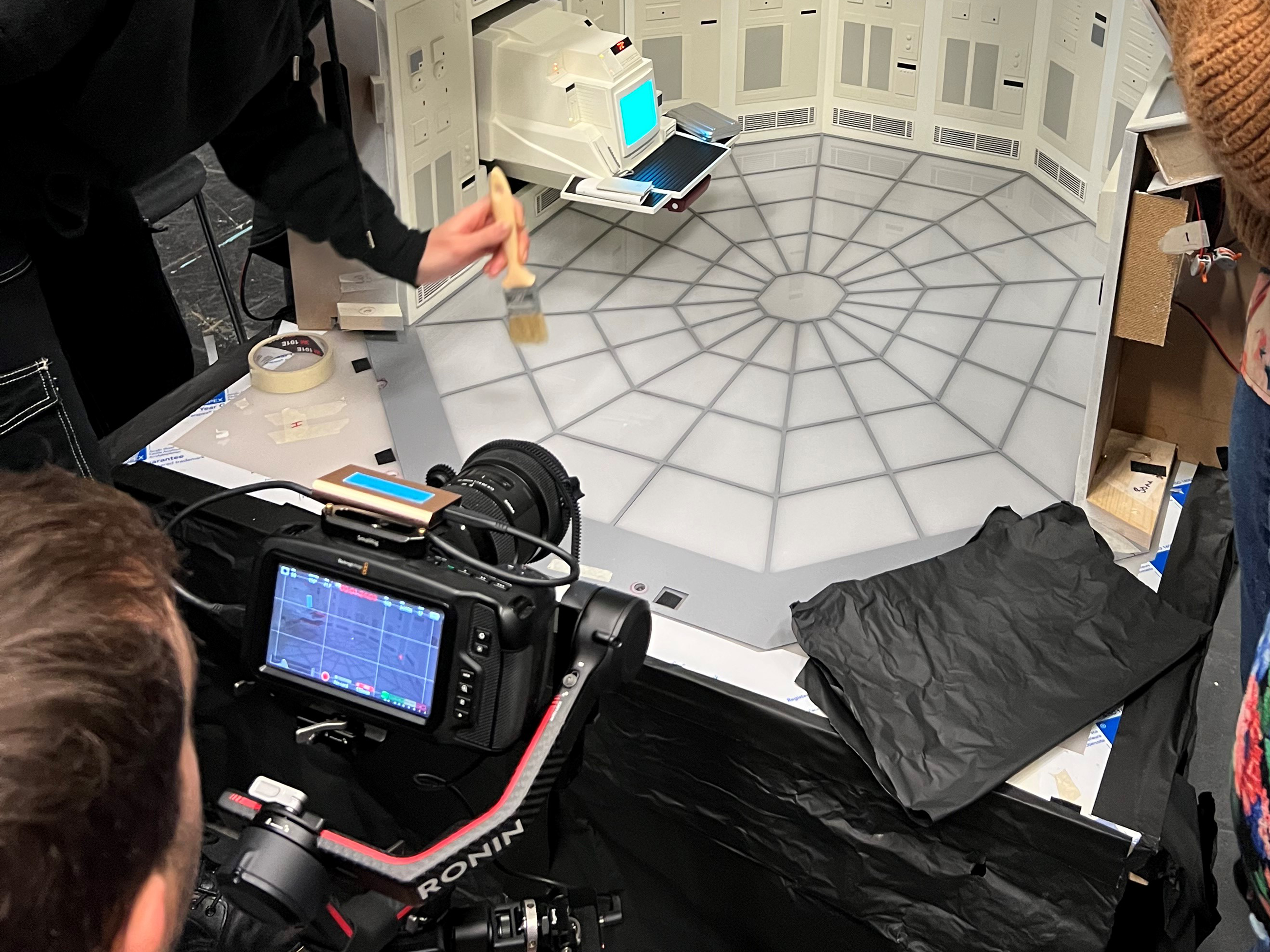
After weeks of intense preparation, its finally time to head to set for the motion control shoot with Model Makers and VFX students collaborating throughout. The front lower and upper walls of the model have been floated out to allow for motion control camera access.
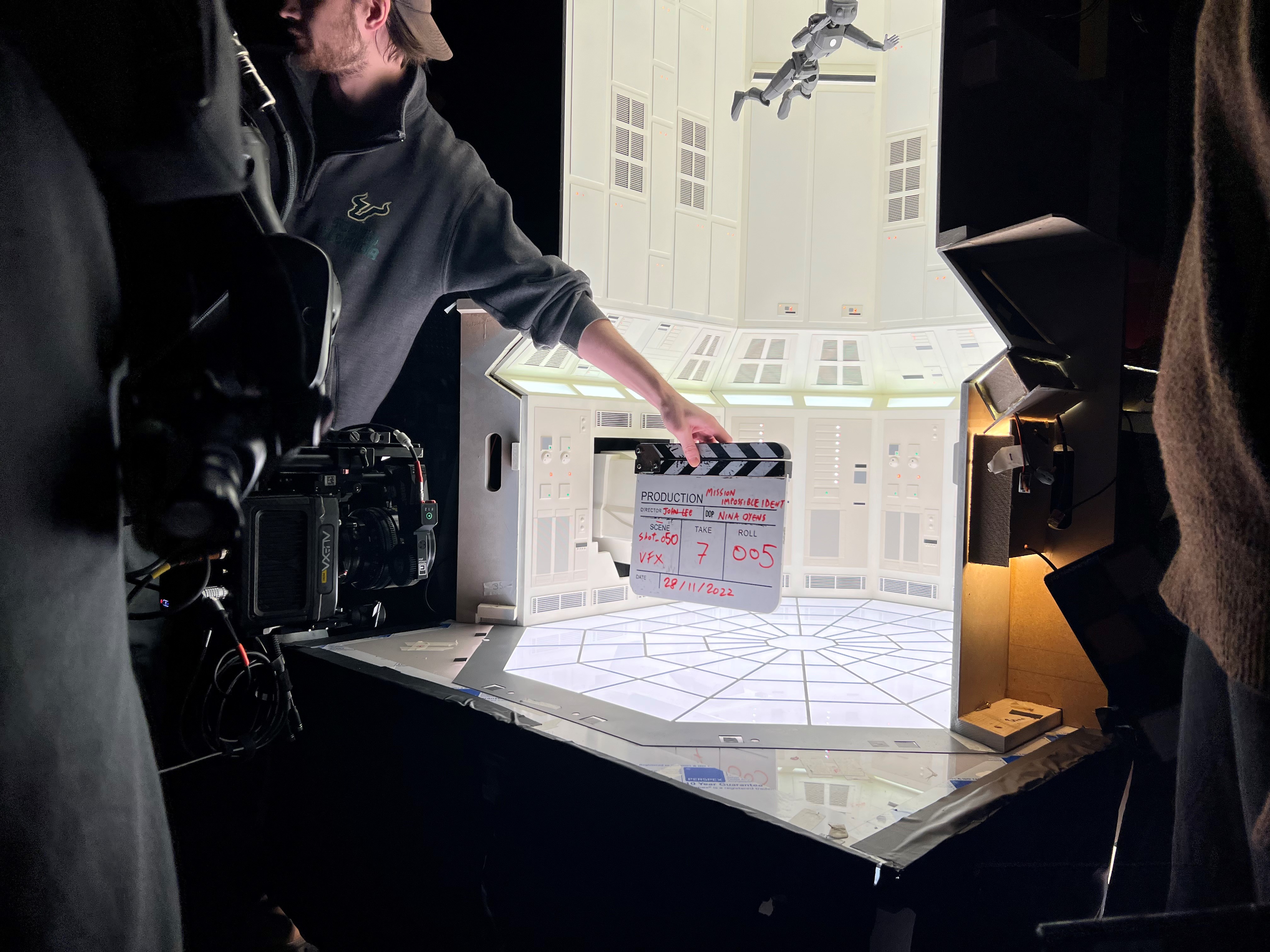
Getting ready for a take! Both Model Makers and VFX artists stand by as the team shoot one of the shots' beauty pass. Each shot has a different set of passes to capture the different light sources and edges within the miniature as a whole and in isolation, so the compositors have full control over the final image in post.
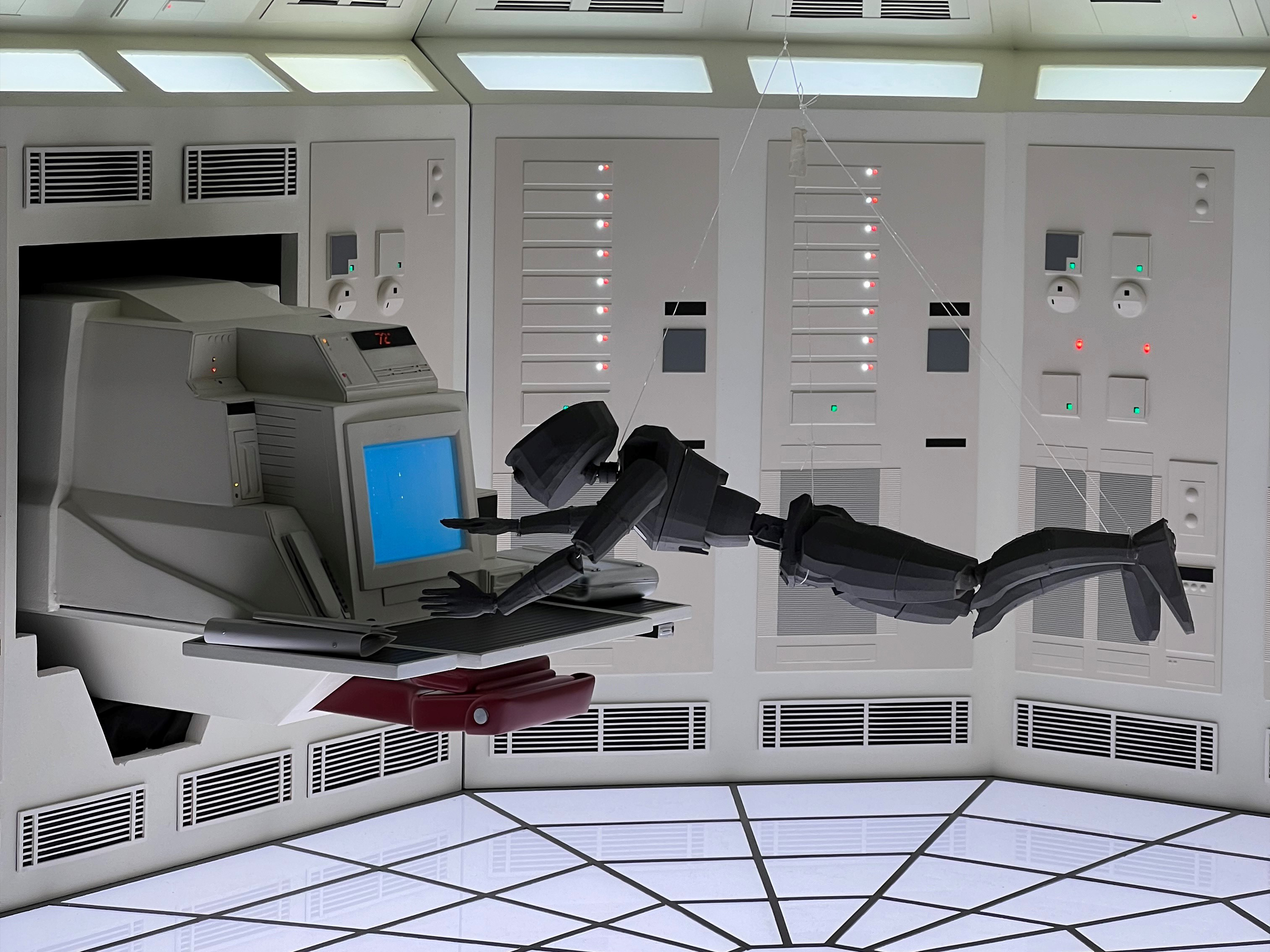
In order to recreate the scene so memorably directed by Brian de Palma in the first instalment of the Mission: Impossible film franchise, a 3D printed robot in grey is used alongside the usual chrome and grey ball. This allows VFX artists to visualise the physical light spill to be replicated onto the CG robot. The robot design was started by the Model Making students, and then iterated on in Maya by the VFX department alongside building its rig.
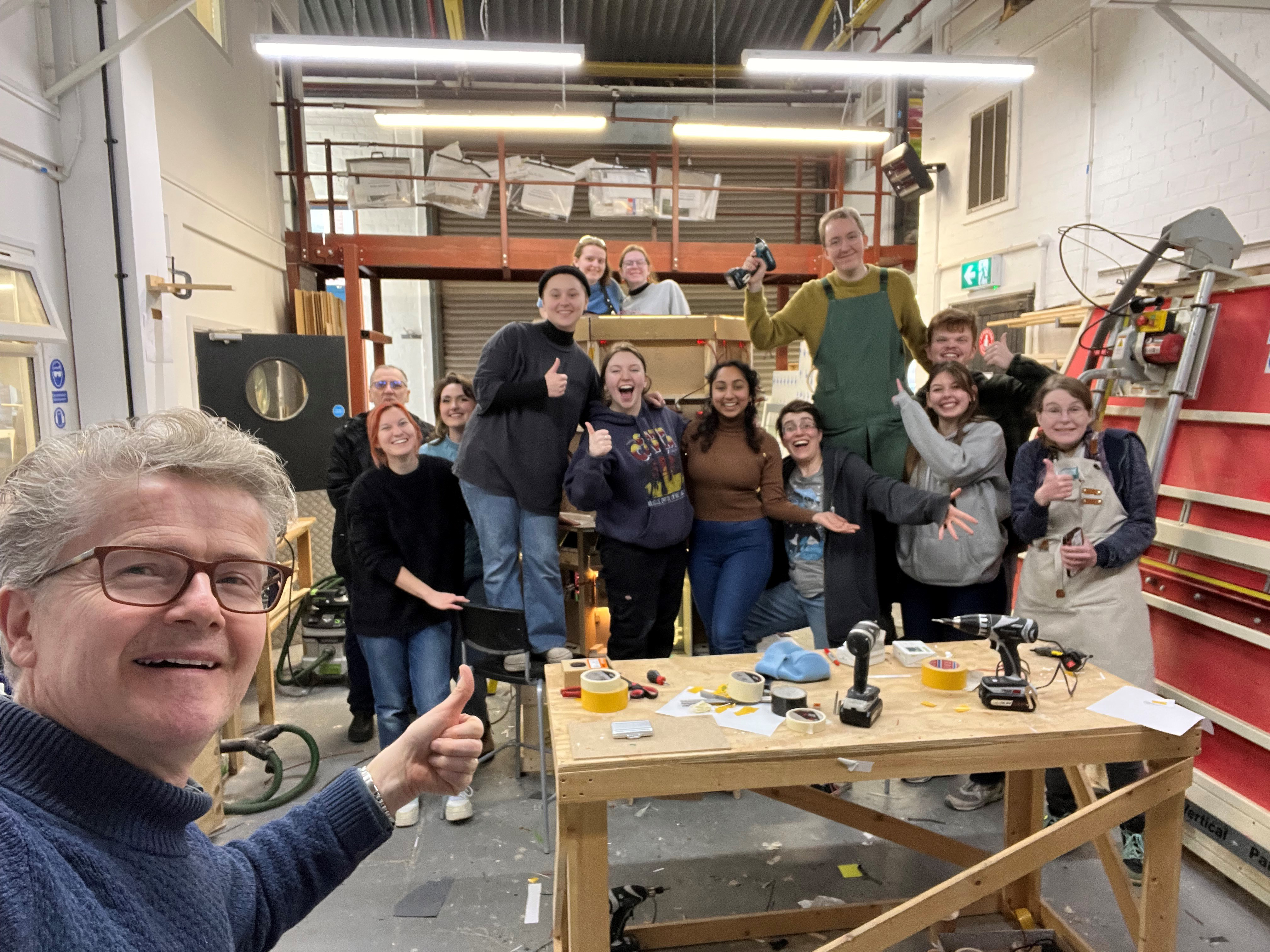
NFTS Head of department John Lee and his students pictured mid Mission: Possible build in the Model Making workshop at the NFTS.
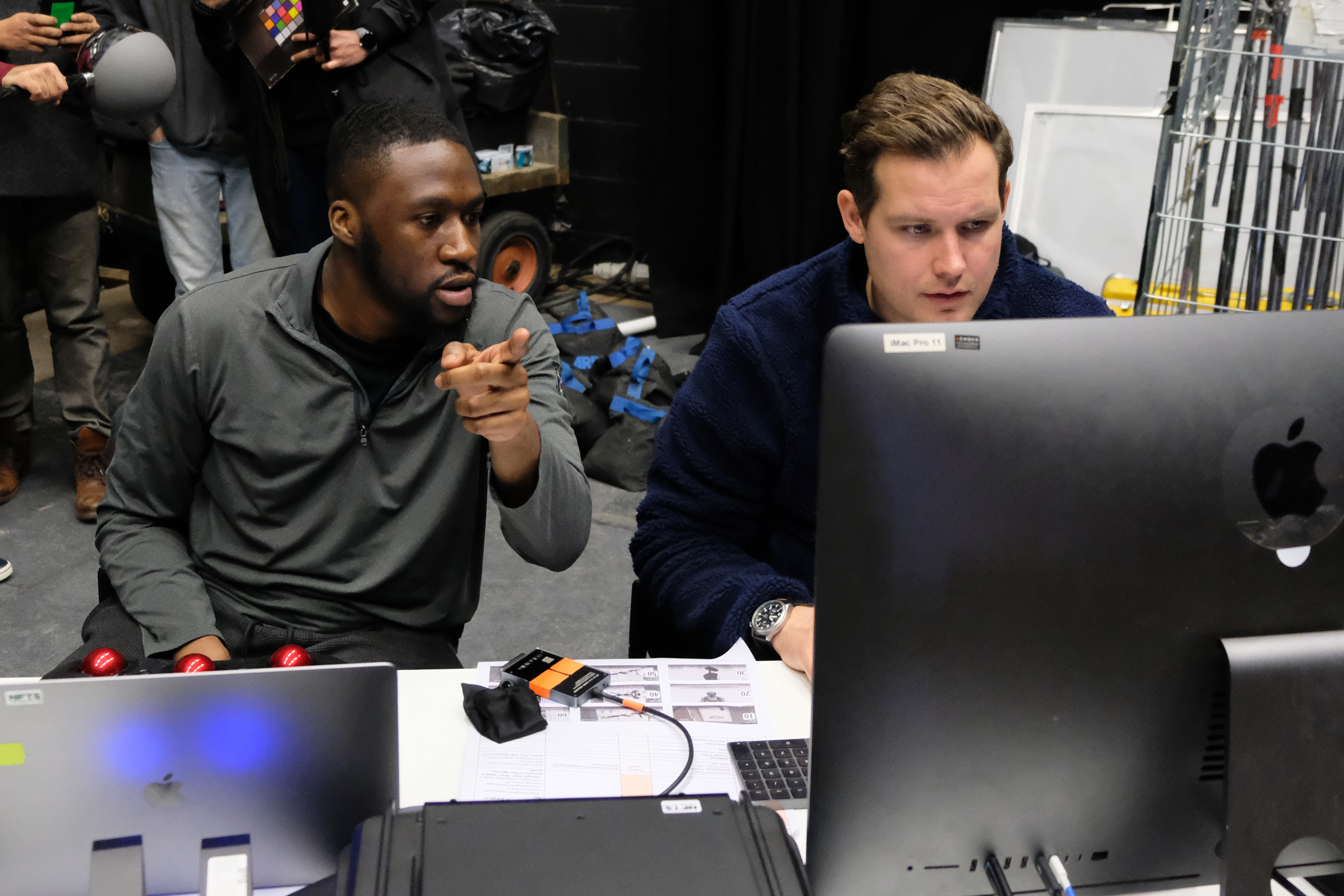
Current VFX student Emmanuel Benjamin and Jonathan Jones from multi-Emmy winning production studio Ember Films check the monitoring setup on Stage 4 at The National Film and Television School as they prepare for the Mission: Possible shoot.
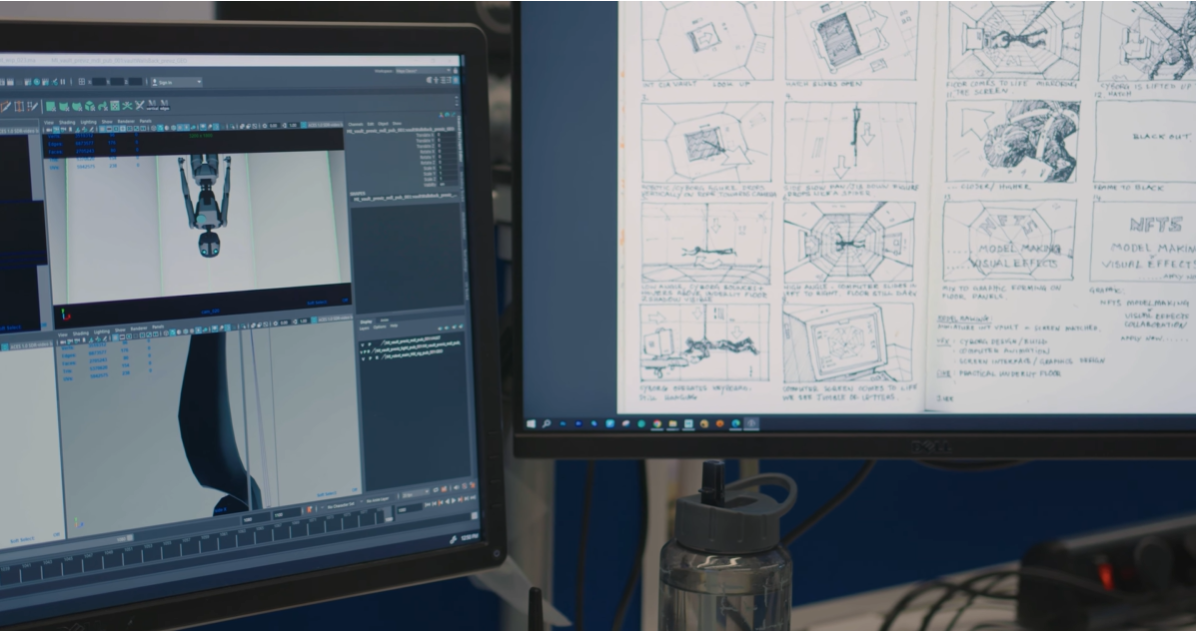
(Right) A hand drawn storyboard was used as a starting point to develop a heavily iterated previz (Left) in Maya by the VFX artists. Previz front loaded the decision making for the layout which was crucial for the project, because Maya's camera animations were superimposed on-set to control the motion-control camera rig.
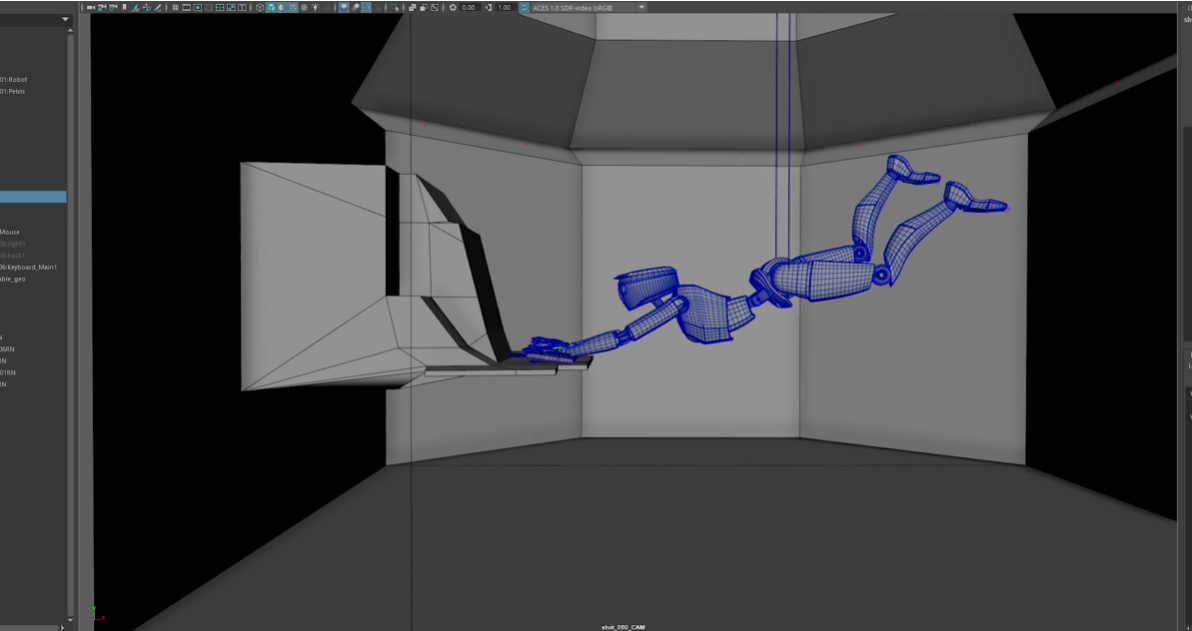
Through framing all the shots in previz, the CG artists can understand exactly what needs to be considered for the robot rig design and what other assets will be on screen, such as the harness rig and keyboard that the robot interacts with. It also becomes the tech-viz that guides modelmakers to plan what components of the set were required on a shot by shot basis and for Ember Films to feedback on technical considerations.
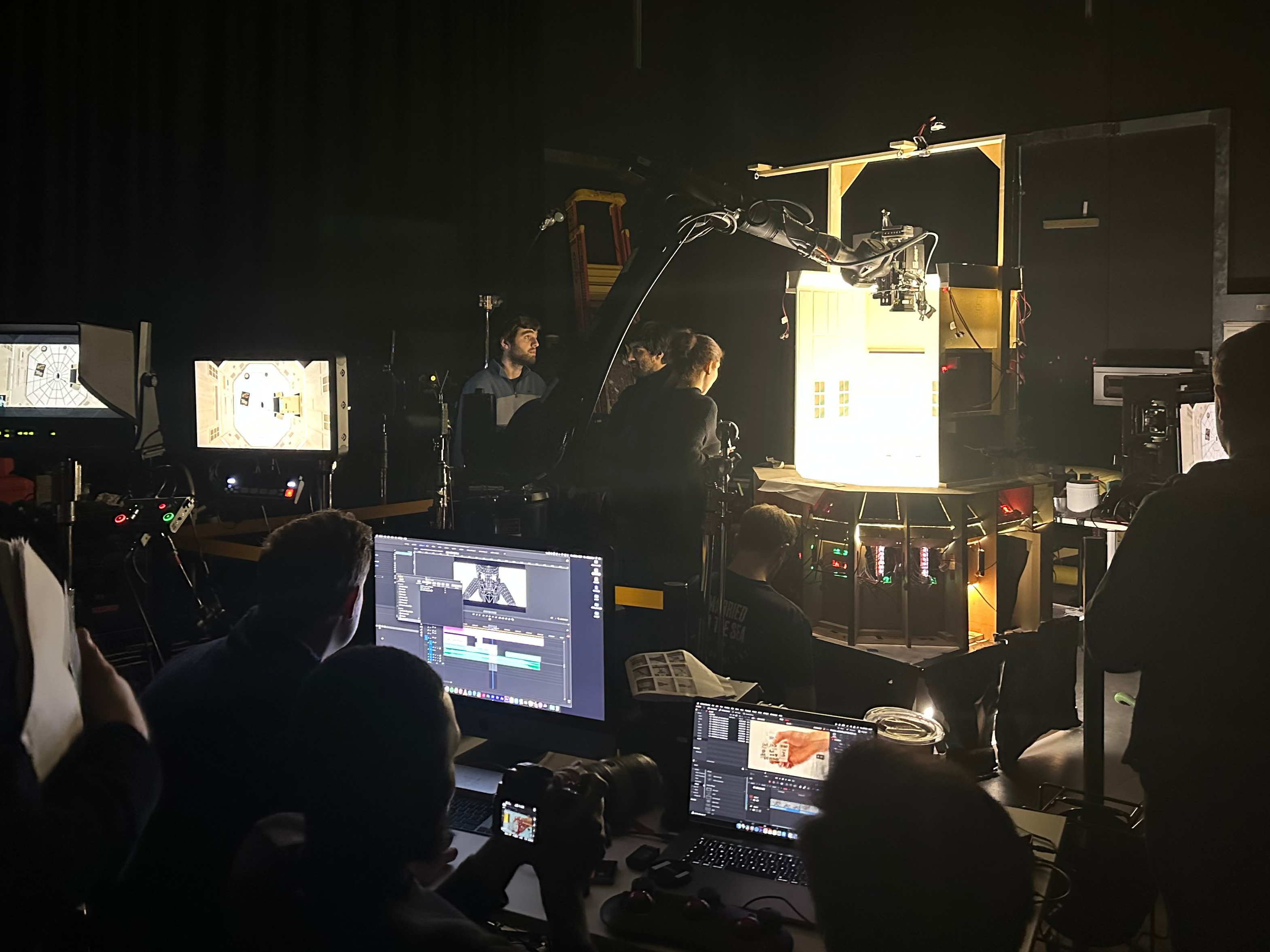
The 1:5 scale miniature in position on stage with upper walls removed facilitated access for the camera to shoot top-down shots. The previz was superimposed on top of the camera feed in the monitoring setup, so the VFX team could check the composition in real time when the motion-control camera rig moved into position.
Applications for the VFX MA programme are currently open for a January 2024 start. Applications to join the NFTS Model Making Diploma in September 2023 are now closed.
Find out more:


